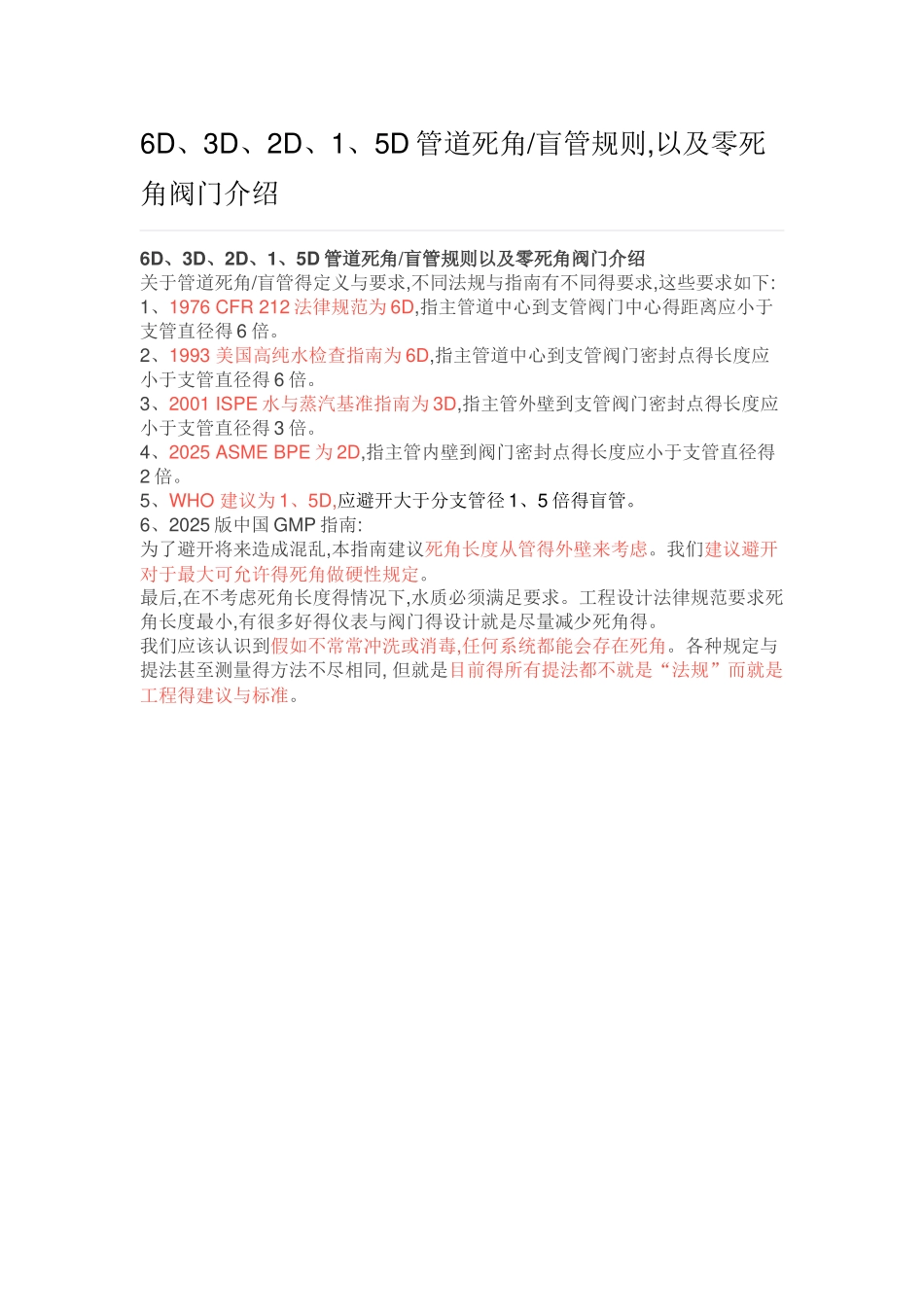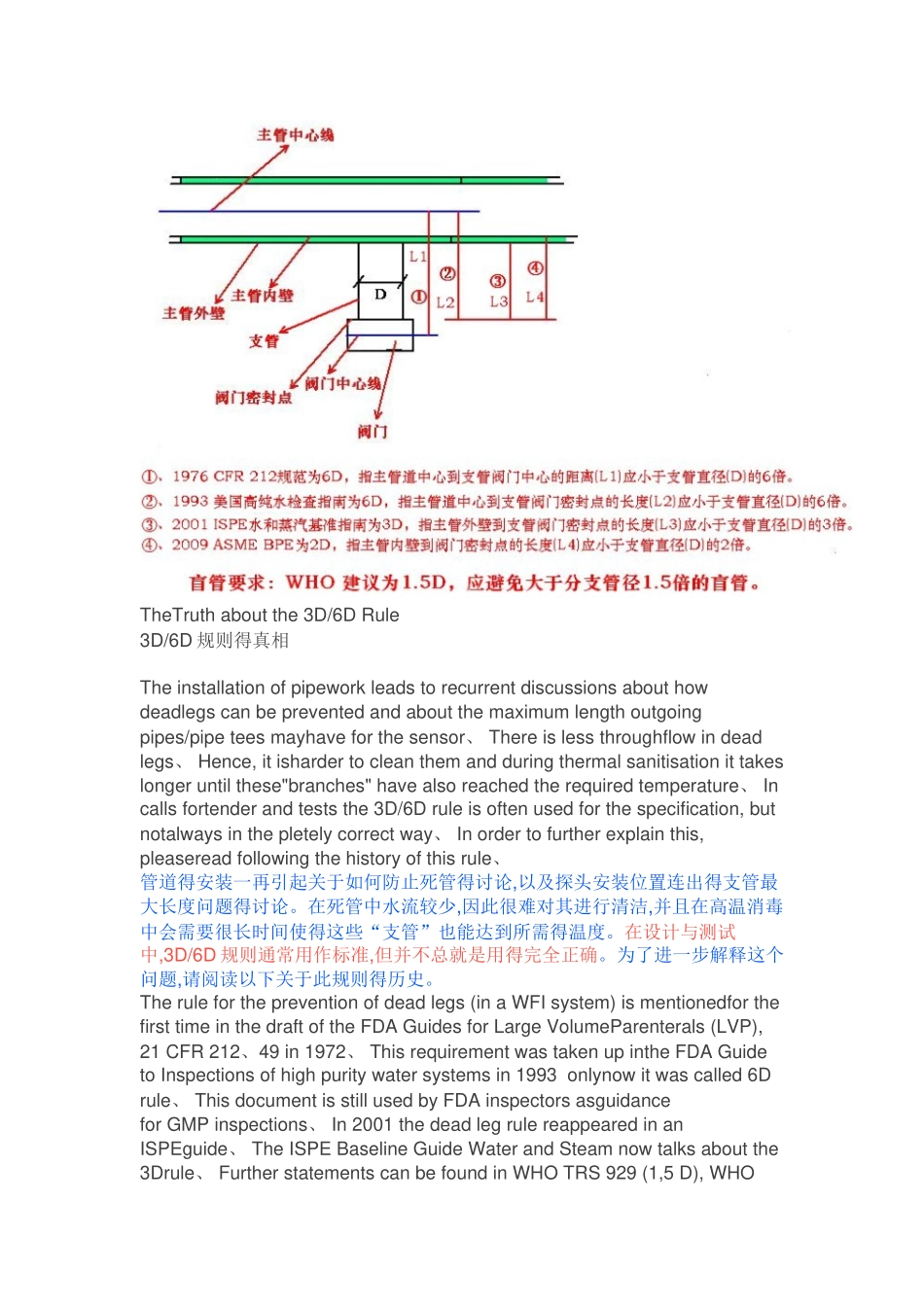6D、3D、2D、1、5D 管道死角/盲管规则,以及零死角阀门介绍6D、3D、2D、1、5D 管道死角/盲管规则以及零死角阀门介绍关于管道死角/盲管得定义与要求,不同法规与指南有不同得要求,这些要求如下:1、1976 CFR 212 法律规范为 6D,指主管道中心到支管阀门中心得距离应小于支管直径得 6 倍。2、1993 美国高纯水检查指南为 6D,指主管道中心到支管阀门密封点得长度应小于支管直径得 6 倍。3、2001 ISPE 水与蒸汽基准指南为 3D,指主管外壁到支管阀门密封点得长度应小于支管直径得 3 倍。4、2025 ASME BPE 为 2D,指主管内壁到阀门密封点得长度应小于支管直径得2 倍。5、WHO 建议为 1、5D,应避开大于分支管径 1、5 倍得盲管。6、2025 版中国 GMP 指南:为了避开将来造成混乱,本指南建议死角长度从管得外壁来考虑。我们建议避开对于最大可允许得死角做硬性规定。最后,在不考虑死角长度得情况下,水质必须满足要求。工程设计法律规范要求死角长度最小,有很多好得仪表与阀门得设计就是尽量减少死角得。我们应该认识到假如不常常冲洗或消毒,任何系统都能会存在死角。各种规定与提法甚至测量得方法不尽相同, 但就是目前得所有提法都不就是“法规”而就是工程得建议与标准。TheTruth about the 3D/6D Rule3D/6D 规则得真相The installation of pipework leads to recurrent discussions about how deadlegs can be prevented and about the maximum length outgoing pipes/pipe tees mayhave for the sensor、 There is less throughflow in dead legs、 Hence, it isharder to clean them and during thermal sanitisation it takes longer until these"branches" have also reached the required temperature、 In calls fortender and tests the 3D/6D rule is often used for the specification, but notalways in the pletely correct way、 In order to further explain this, pleaseread following the history of this rule、管道得安装一再引起关于如何防止死管得讨论,以及探头安装位置连出得支管最大长度问题得讨论。在死管中水流较少,因此很难对其进行清洁,并且在高温消毒中会需要很长时间使得这些“支管”也能达到所需得温度。在设计与测试中,3D/6D 规则通常用作标准,但并不总就是用得完全正确。为了进一步解释这个问题,请阅...


